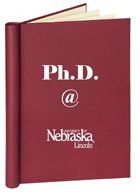Graduate Studies, UNL

Dissertations and Doctoral Documents from University of Nebraska-Lincoln, 2023–
First Advisor
Carolyn Barber
Degree Name
Doctor of Musical Arts (D.M.A.)
Department
Music (Wind Band Conducting)
Date of this Version
5-2024
Document Type
Dissertation
Citation
A doctoral document presented to the faculty of the Graduate College at the University of Nebraska in partial fulfillment of requirements for the degree of Doctor of Musical Arts
Major: Music (Wind Band Conducting)
Under the supervision of Professor Carolyn Barber
Lincoln, Nebraska, May 2024
Abstract
The wind band saw significant development in its literature, instrumentation, and programming practices throughout the twentieth century. Midway through the twentieth century the identification of a “core” repertoire began to make its way into the forefront of the wind band profession’s priorities, resulting in three significant studies by Acton Eric Ostling Jr. (1978), Jay Warren Gilbert (1993), and Clifford N. Towner (2011). Along with these studies many smaller studies and surveys were being published with this same goal of identifying either a “performance core” or an “intellectual core.” However, with new works of serious artistic merit constantly being written and included in these studies, it calls into question the purpose behind the efforts of identifying a “core.” A defining feature of the wind band is the exponential growth of its literature through efforts by bandmasters such as A.A. Harding, E.F. Goldman, William D. Revelli, Frederick Fennell and others in starting in the twentieth century. These efforts inspired other bandmasters and school band conductors to commission composers who were beginning to experiment with writing for wind instruments whereas before bands would predominately use orchestral transcriptions. As the number of new compositions being written grew at an exponential rate, programming practices began to shift from transcriptions to original wind band works. Major music distributors and conferences such as J.W. Pepper, Midwest Sheet Music, and the Midwest Clinic noticed these trends and fueled commissioning efforts and influenced the programming habits through their marketing strategies creating an ouroboros effect. With the continuous exponential growth of the wind band literature through commissioning efforts and influencers affecting the programming practices of band directors the continuous need to define a “core” repertoire serves as an unnecessary barrier to what could be the next defining era of the wind band. This era would be defined as the pursuit of diversity and inclusion dedicated to experimentation, exploration, novelty, and growth.
Advisor: Carolyn Barber
Recommended Citation
Frost, Trevor, "An Unnecessary Barrier: A Critical History of Efforts to Define a Core Repertoire for the Wind Band" (2024). Dissertations and Doctoral Documents from University of Nebraska-Lincoln, 2023–. 94.
https://digitalcommons.unl.edu/dissunl/94


Comments
Copyright 2024, Trevor Frost. Used by permission